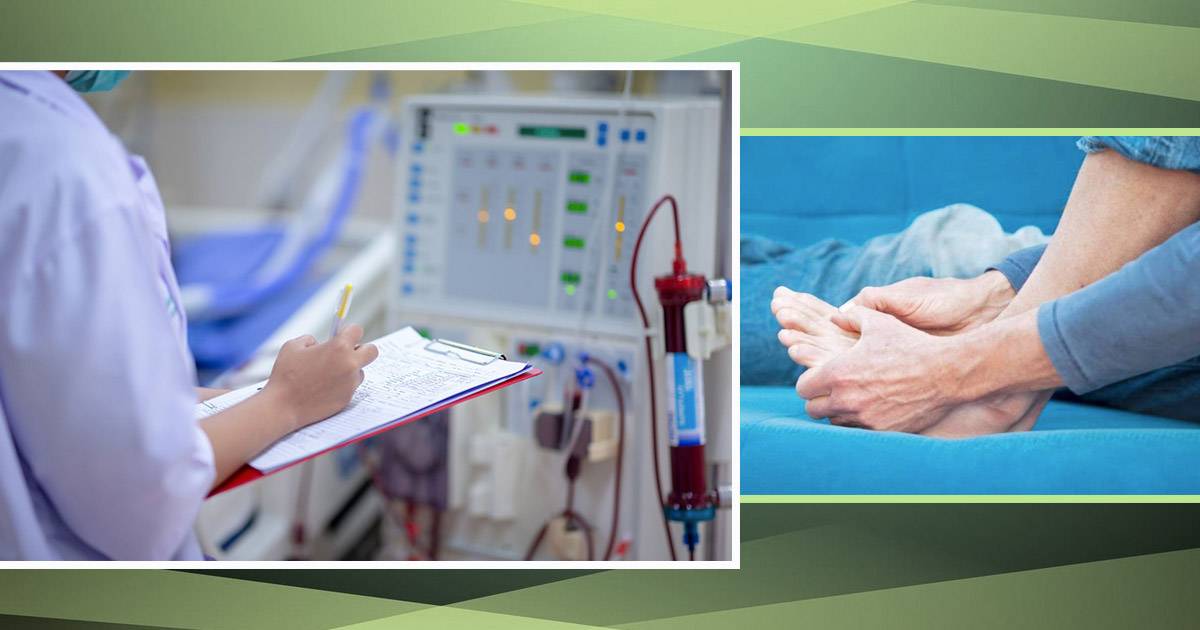Know What to do About Muscle Cramps After Dialysis

After dialysis, some people get muscle cramps. These cramps can be painful and happen during or after the treatment. Knowing why they happen and how to stop them can make you feel better after dialysis.
Why do you experience muscle cramps during and after dialysis?
During and after dialysis, muscle cramps happen for a few reasons. Dialysis removes extra fluid and waste from your blood, including things like potassium, sodium, and calcium. Sometimes, this removal can make the levels of these things in your body uneven, which can cause cramps.
Also, dialysis can stress your body, which can make your muscles feel irritated and crampy. The sudden changes in fluid and electrolytes can mess up how your muscles work, causing them to tighten up and spasm. Other things, like bad blood flow, nerve problems, and tired muscles, can also make cramps more likely during or after dialysis.
Knowing why these cramps happen helps us find ways to prevent them and deal with them better when we’re getting dialysis treatment.
How do you treat muscle cramps after dialysis?
If you get muscle cramps after dialysis, it’s important to treat them right away. Here are some ways to help you feel better:
- Gentle Massage: Gently massage the cramped muscles to relax them. Use your fingers to rub the area in circles, applying gentle pressure. This can help improve blood flow and make the muscles feel better.
- Heat and Cold: Applying heat or cold to constricted muscles can also be beneficial. For heat therapy, use a warm towel or heating pad; for cold therapy, wrap an ice pack in a towel. Heat relaxes the muscles, but cold decreases inflammation and numbs the area.
- Stay Hydrated: Drink plenty of water to stay hydrated, but don’t go overboard. Dehydration can exacerbate cramping, so drink water before, during, and after dialysis to keep your body balanced.
- Stretching: Do gentle stretching exercises to relieve muscle tension. Focus on stretching the muscles that are cramping, like your calves and thighs. Hold each stretch for a few seconds and repeat a few times.
- Relaxation Techniques: Deep breathing, meditation, and gradual muscle relaxation can all help you reduce stress and tension in your body. These strategies can help calm your nerves and relax your muscles.
- Medication: Your doctor may prescribe medicine to treat muscle cramps. This may include muscle relaxants or pain medications. Consult your doctor about what could work best for you.
- Follow-up with Your Doctor: If your muscle cramps don’t get better or get worse, see your doctor right away. They can check to see if there’s a more serious problem causing the cramps and they can help you find the right treatment.=
What other side effects of dialysis do I need to know?
Muscle cramps aren’t the only thing to watch out for during dialysis. Some other things could happen too. Knowing about these side effects can help you take better care of yourself while getting dialysis treatment. Here are a few to keep in mind:
- Low Blood Pressure: Sometimes, dialysis can make your blood pressure drop too low. This can make you feel sick, dizzy, or even faint. To help prevent this, your dialysis settings might be changed, or you might be told to drink more fluids or eat salty snacks before treatment.
- Itching and Dry Skin: Many people getting dialysis feel itchy or have dry skin. This can happen because of imbalances in your body’s fluids or electrolytes. Too much phosphorus, which dialysis can’t remove well, can also make you itch. Using moisturizing creams, avoiding hot showers, and following your diet can help.
- Infections: Infections at the site where you get dialysis can happen. This could be where your fistula or graft is for hemodialysis, or where the catheter is for peritoneal dialysis. If you notice redness, swelling, or pain at the site, it’s important to see your doctor right away to prevent serious infections.
- Anemia: Anemia, or having too few red blood cells, is frequent in people with kidney disease and those on dialysis. This can leave you feeling weary, weak, or dizzy. Your doctor may prescribe drugs or vitamins to help you with this.
- Bone and Mineral Problems: Kidney disease and dialysis can mess up your body’s minerals, which can weaken your bones and increase your risk of fractures. Your doctor might suggest changes to your diet, give you supplements, or prescribe medications to help keep your bones healthy.
Learn to deal with muscle cramps after dialysis
Handling muscle cramps after dialysis takes a few different steps. Drink enough water, stick to your diet, and do some gentle stretches to lower the chances of cramps. If cramps do happen, try relaxing techniques or using hot or cold packs to feel better. Make sure to talk to your doctor if cramps keep happening or get worse. With the right care, you can make muscle cramps less of a bother during dialysis and feel better overall.
